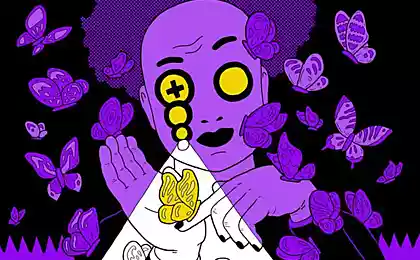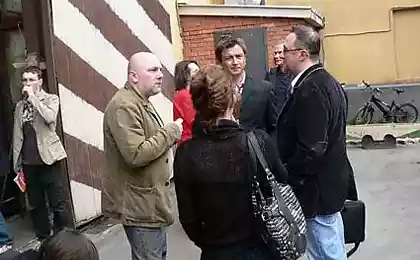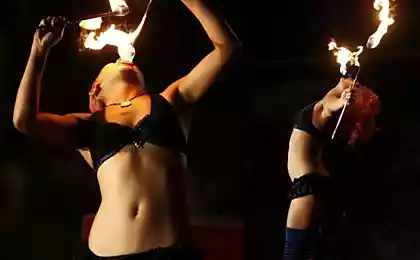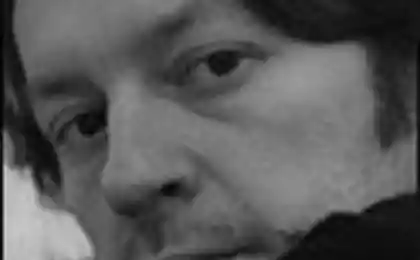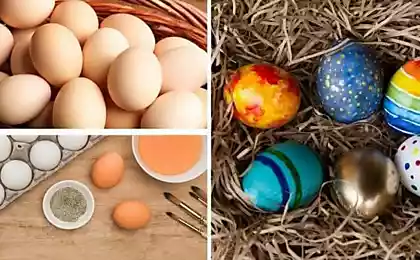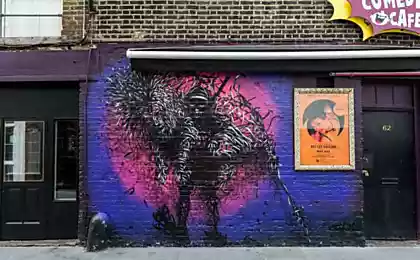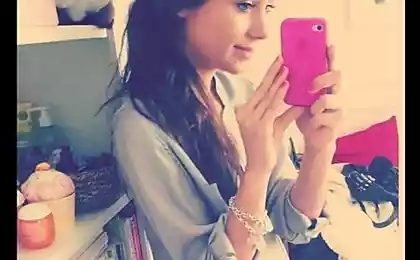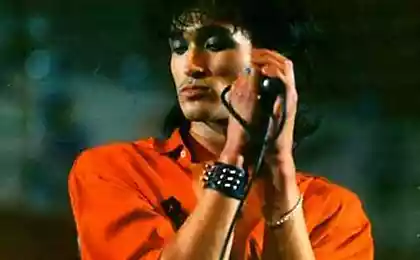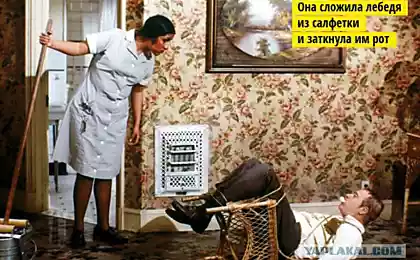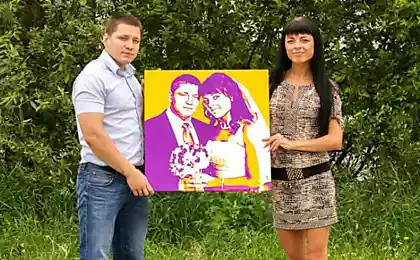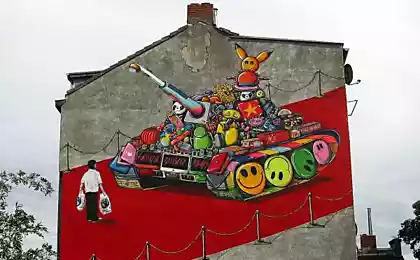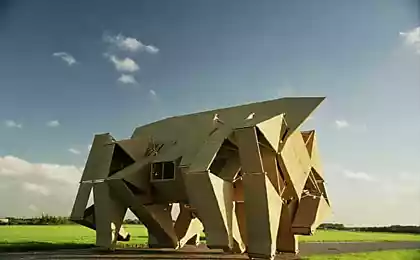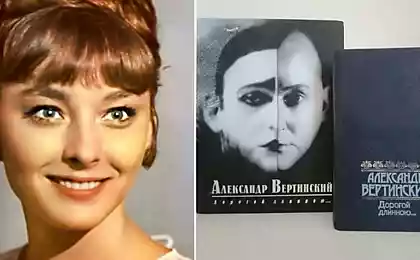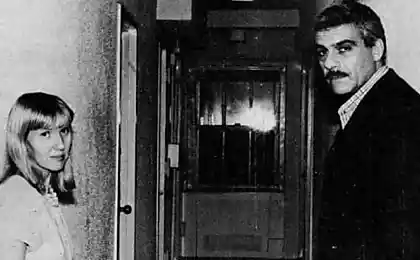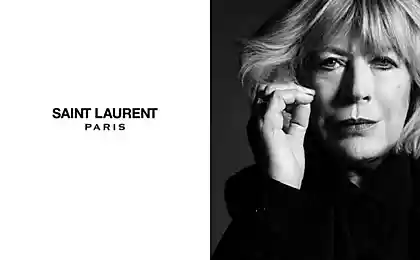632
Marianna Verevkina — life in photos
One million one hundred seventy five thousand one hundred twenty three
Marianna Verevkina for a long time remained virtually unknown in the Soviet and post-Soviet Russia.
The tumultuous events of the early twentieth century split the Russian avant-garde artists in "living and the dead." The living were those who remained in Russia and renounced the formalistic quest, he continued to paint, putting her art into the Procrustean bed of socialist realism.
The dead were those who left or persisted in their formalism, while remaining in Russia. Crumbs of information about them barely broke through the censorship and ideological barriers.
For several generations of Soviet people Marianna Verevkina was an artist, which was not. As well, and many others. Even welcomed initially rapid burst of Russian avant-garde 20-ies of the whole moved into the store and was hidden from the public for many years.
In the late ' 80s veil of ignoring the original artist began to dissipate, but finally the creative Marianne Verevkin returned Home only in the 2010th year, when the very successful exhibition "Artists of Russian abroad. Marianna Verevkina. 1860-1938" in the State Tretyakov gallery.
The exhibition has triggered a wave of publications in the press and the blogosphere, because many of the first to see her pictures. All this is now available and many of the participants Live Journal dedicated to the works of Marianne their pages. Less available were numerous photos depicting moments of the turbulent life of Marianne. Thanks to a happy coincidence of pictures of Marianne, her family, friends and colleagues made throughout her life, is almost completely preserved and has endured numerous removals. In recent publications, you can find a lot of these photos, but they are often not very good quality, as due to budget constraints, publishers are practically not involved in them even minimal restoration, just scanned images from the archive and immediately sent them to print.
I spent many hours scanning pictures from albums, removing stains and scratches, restoring contrast and so on. Why did I do it? After all, Marianne Verevkina is not one of my favorite artists, in fact, I find her work in some way depressed and do not hide it. The answer is simple, the photos of Marianne and her entourage was no less interesting than her work, they found the captured image of the era and cultural life at the beginning of the last century, and most importantly, a lot of interesting people, each of which deserves a separate story.
Traditionally, let's start with a little Marianne.
Thirty seven million seven hundred fifty three thousand five hundred fourteen
In this photo Marianna with her mother, Elizabeth Verevkin (Daragan) and brother Peter.
Marianne's family is a military family. Her father and grandfather were generals in the Russian army, who occupied prominent positions and received numerous awards. Maternal Marianne was the granddaughter of the writer and educator Anna Daragan.
Father of Marianne, Vladimir Verevkin, member of the Crimean war, was wounded by two bullets, covering the retreat of Russian troops from Sevastopol.
Fourteen million six hundred thirty two thousand eight hundred thirty three
From the view on the rewarding of Vladimir Verevkin the order of St .. George 4-th degree:
"In recompense for distinguished services, rendered in the defense of Sevastopol, where, within 3 months, successfully protected the right flank of the II branch of the defensive line, and 27 Aug 1855, being near the redoubt Schwartz, when the enemy took possession of the sword, rushed with 2 companies of the regiment entrusted to him at the enemy with bayonets and together with the arrived reserves has knocked him out of the redoubt, and took a considerable number prisoners."
Brother Pete, Peter Vladimirovich Verevkin was an important government official, was Governor of Kovno region.
Here he and his wife, are important in the official photographs.
Thirty nine million one hundred eighty thousand three hundred forty three
Traditionally, like any military family, Marianne with parents often had to move, but in 1883 Marianne is in Moscow and begins to take private lessons from Pryanishnikov at the Moscow school of painting, sculpture and architecture and is still life under the guidance of Polenov. After his mother's death, in 1885, moved with his father to St. Petersburg, where he meets with Ilya Repin and begins to take him drawing lessons.
Marianne, 1889. Very stylish jacket, excellent and now would look.
Seventy two million three hundred forty five thousand nine hundred forty six
Marianne in a chair, not a very good picture, unfortunately the photogenic Marianne never differed.
Thirty seven million three hundred eleven thousand one hundred forty five
Friend and cousin Lida, 1890
Ninety four million three hundred forty two thousand eight hundred thirty one
Marianne cousin Lida and friends, 1890
Thirty eight million five hundred seventy four thousand three hundred sixteen
Self-portrait in a sailor suit
Thirty nine million eight hundred twenty thousand seven hundred seventy nine
In 1888 during a hunting accident: Verevkina shot himself in the palm of his right hand and she had to learn to hold the brush between your middle and ring fingers. Hand heal for a very long time and required multiple surgeries and prolonged treatment, this photo is 1890, the year Marianne still with a bandaged hand.
Fifteen million nine hundred thirty two thousand two hundred thirty two
In St. Petersburg, the father of Marianne Verevkin was appointed commandant of the fortress. Verevkina was the soul of the company, which included Igor Grabar, Dmitry Kardovsky, many young Petersburg artists. Often the whole company gathered in the apartment Verevkina in the fortress, where they studied the reproduction of a new generation of Western painters and argued about art. A fortress at the Verevkin were Konstantin Somov, Nikolai Roerich, Philip Malyavin, Osip Braz, Alexander Gaush, Anna Ostroumova.
Studio in St. Petersburg, not bad for an aspiring artist
Thirteen million four hundred sixty eight thousand seven hundred sixty two
Marianne
Eighty one million seven hundred eighty eight thousand four hundred forty nine
Repin thought highly of Marianne, said that it is the "Russian Rembrandt" and also compared it with Velasquez and Francisco de Zurbaran. Well what can I say, Ilya Yefimovich was visible.
Marianne Verevkina, Portrait Of Vera Repina
Sixty nine million three hundred ninety thousand eight hundred fifty four
In the Studio with guests, in the centre father of Marianne
Forty five million five hundred thirty one thousand one hundred fifty two
Note the dashing military right, Yes, he is, "tooth", Alexei Jawlensky, also a student of Repin and fatal Platonic love Marianne Verevkin. Meeting with Jawlensky turned and whirled his whirlwind life of Marianne.
Relations are developing rapidly, Jawlensky almost becomes a family member.
With Alexei Jawlensky, Vilnius, 1892
Sixty four million nine hundred ninety thousand six hundred ninety one
With Jawlensky and Marianne Lida
Sixty three million one hundred sixty six thousand six hundred nine
In the Studio, along with Jawlensky, 1893
Thirteen million nine hundred eighty three thousand eight hundred sixty one
In 1896 his father dies of Marianne and she is starting to get more than a solid pension of 7 thousand rubles a year, huge money in those days. For comparison, wages of workers in the early XX century in Imperial Russia ranged from 25 to 35 rubles, a first-class ticket to St. Petersburg from Moscow cost 16 rubles.
Suddenly she becomes independent and together with Jawlensky decides to go to Europe, one of the "hot spots" for the development of new art. Hot spot was in Munich, which attracts the Russian and Scandinavian artists, and in which Anton azhbe's founded his famous school of art.
In Munich Verevkina essentially ceases to paint. According to her theory of the "female talent" is more suitable for training, only the "male talent" is able to actually create. Marianne decides to devote himself to the work Yavlenskogo. Because it should not have anything distract from this noble service, "with me riding both my Donna, both can serve as models."
This combination of exaltation and naivety never ceases to amaze until now!
In the workshop azhbe's
Eighty six million six hundred ninety eight thousand three hundred thirty
Azhbe's methodology was focused on the development of individual abilities of students and the development of their own ways. Much attention he paid to the study of drawing and considered it a necessary part of art education. In painting, he rejected any templates and considered it necessary for the artist to seek new artistic techniques.
Anton azhbe's, Black woman, 1895
Seven million six hundred thirty seven thousand four hundred sixty seven
Students azhbe's was David Burliuk, Marianne Verevkina, Igor Grabar, Zinovy Grzhebin, Mstislav Dobuzhinsky, Vasily Kandinsky, Dmitry Kardovsky, Kuzma Petrov-Vodkin, Fanny Reventlow and Alexei Jawlensky.
Means Marianne enough not only for a comfortable life in Munich, but on a trip with friends across Europe.
At the same time going on and the final conflict between heavenly love and earthly love. In the middle of it was Elena Neznamova, pretty maid, which Marianne rashly took with him to Munich.
Let's look at the culprit of the disorder in a creative family.
Alexei Jawlensky, Vladimir Bekhteev, Marianne Verevkina, Elena Neznamova, Alexander Sakharov in costume. Elena pictured in a turban, immediately before Jawlensky.
Eighty one million one hundred forty seven thousand two hundred fifty nine
Another picture of the Holy family with friends, Elena on the bottom in the middle.
Eighty eight million two hundred forty six thousand three hundred fifty six
The extreme left is the photograph of the dancer Alexander Sakharov.
Marianne takes great interest in his life and helps along with Wassily Kandinsky and von Hartmann in the production of avant-garde stage composition "Yellow sound".
Marianne Verevkina, a portrait of the dancer Alexander Sakharov
Forty eight million eight hundred eighty thousand nine hundred seventy one
Alexey Georgievich Jawlensky, Red lips (portrait of the dancer Alexander Sakharov)
Sixty nine million five hundred sixty thousand six hundred fifty six
Despite the drama in the family all participants of this story continue to live together with a break for a trip to Russia, Jawlensky where is born his son from Elena Neznamova. Back in Munich Jawlensky all represented him as his nephew.
Together with Jawlensky Marianne continues to study with Anton ažbe, organizes its own art gallery and... continues to take care of Jawlensky, giving herself to the development of his artistic talent.
Jawlensky unknown lady, 1904
Eighty five million one hundred twenty three thousand four hundred seventy
Artists in the Studio azhbe's
Seventy six million eight hundred one thousand seven hundred ten
Marianne, Alexei Jawlensky and three girls in her Studio, 1905
Fifty three million four hundred seventy six thousand seven hundred fifty
The turning point comes in 1906, dies unexpectedly Anton azhbe's rumored to be because of excessive addiction to red wine. Crashing the world of art and communication, the center of which he was.
The way his pupils begin to diverge in different directions. Affected by this, and Marianne, together with Jawlensky, Gabriele Munter she is leaving Munich and finds refuge in the small town of Murnau. In the same year, unexpectedly for herself, she again, after nearly a decade, begins to draw.
At first it was just sketches in a small album.
Sixty three million seven hundred forty nine thousand three hundred twenty five
Sixty six million twenty three thousand eighty two
Two million seven hundred fifty seven thousand three hundred fifty eight
When in the same year, Marianna Verevkina once again takes up the brush, are born absolutely new works that are maximally expressive and full of metaphysical meaning. Her technique also radically changed: it no longer use oil paint, and all its subsequent operation writes tempera, combining it with pastels, ink and slate pencil. Color and light become the kind of semantic code it works: dissonant combinations of bright saturated colors contribute to the viewer's particular emotional state – anxiety, excitement, uncertainty, anticipation of trouble. The trouble, which was not long in coming…
Marianne Verevkina, School, Fall, 1907
Seventy five million twenty five thousand eighty nine
Marianne Verevkina, the Red tree, 1910
Ninety four million forty eight thousand three hundred fifty three
Street in Murnau, a photo of Gabrielle Munter
Two million nine hundred thirty two thousand four hundred eighty one
Passers-by on the main street in Murnau, a photo of Gabrielle Munter
Twelve million seven hundred seventy eight thousand six hundred two
Marianne, Gabrielle Munter and Jawlensky "nephew", 1909
Eight million six hundred eighty one thousand one hundred eighty six
Marianne Verevkina, Self-Portrait, 1910
Forty one million one hundred twelve thousand eight hundred twenty four
With Jawlensky Marianne not by chance ended up in Murnau, they took advantage of the hospitality of Gabriele Munter, in which Murnau was a cozy house, and enough space for all honest company.
Eighty four million one hundred twenty four thousand five hundred forty nine
It was frequently visited by Vasily Kandinsky and all four together was painted EN plein air in the beautiful surroundings of Murnau.
Gabriel Munter, Russian house
Forty four million nine hundred ninety two thousand three hundred thirty one
The period of life in Murnau was a kind of "Boldino autumn" for Marianne, she actively works together with Kandinsky, Jawlensky, Kanoldt and Arble founded the "New Munich art Association" (Neue Künstlervereinigung München). Joined later on by Franz Marc, August Macke and other German artists, successfully held the first exhibition of the Association in the gallery, Thannhauser in Munich. In 1910 work Verevkin exhibited in Riga and St. Petersburg. In 1911 Jawlensky Marianne along with rides Paris, where he met Matisse.
Rural landscape
Thirty five million four hundred fifty five thousand six hundred fifty four
Laundresses
Twenty two million six hundred ninety eight thousand eight hundred sixty five
Beer restaurant
Eighty three million eight hundred thirteen thousand one hundred eleven
After some time, Jawlensky and Franz Marc founded his own group, the Blue Rider.
New Munich Association was too traditional and, as they believed, hindered their artistic development. For some time the two groups existed at the same time and Marianne has exhibited his works at exhibitions of the "Blue Rider".
As it turned out, during the war in the house of Gabriela kept hundreds of works of artists "Blue rider", including Kandinsky, and they were not discovered by the Nazis, despite several searches. On its 80th anniversary Munter handed his collection to the state Museum in Munich.
In the last prewar years, the relationship with Jawlensky Marianne vary from difficult to very difficult. Jawlensky and Marianne are often long lived in the Russian Empire — in the estate Blagodat in Lithuania, in Kovno, where the elder brother of Marianne, Peter Verevkin, was Governor, participated in the European and Russian artistic life, but in 1914, leaving Marianne alone, trying once again to part with Jawlensky. Alas, it is not long enough, in August she returns to Germany and goes to Jawlensky in Munich.
Marianna Verevkina with his nephew Alexander, Lithuania, 1914
Fifty million three hundred eighty seven thousand eight hundred eighty six
A more inopportune time for the return to Germany it was hard to imagine, brother and friends certainly tried to dissuade Marianne, but she didn't listen to them. Ironically, it's "irresponsible decision" ultimately saved as the life of Marianne and her legacy.
With the beginning of the war, "Swedish family" Marianne was forced to emigrate to Switzerland.
Marianne, Jawlensky, his son and Elena (LEL) Neznakomomu settled first in Saint-Prex under Lausanne, and in 1917, in Zurich. Despite the war, a pension was continued, although reduced by half in connection with military time. Verevkin's first opportunity to work for theatre — in Lugano, she collaborated with the Russian dancer Alexander Sakharov in the production of his ballet. In 1919 the artists chose a place of residence Ascona is a small town on the shores of Lago Maggiore. Warmer than in the North of Switzerland, the climate suited Jawlensky. Indeed, the sacrifice of Marianne towards Jawlensky has no analogues.
Switzerland became Verevkin a place of last refuge. In 1921 took place the final break of relations with Jawlensky, what she wrote in her diary: "He is a creature of my life, my ultimate goal, my torture". Jawlensky finally decided to marry Neznakomoi and moved with her and their 20-year-old son in Wiesbaden.
In Ascona starts a new and last stage of the life of Marianne. He was in poverty, in 1917, the flow of money from Russia came to an end and Marianne remained practically without means, she received a small allowance from the Swiss red cross and painted postcards for tourists. Helped friends in Ascona Marianne was again the center of cultural life, her paintings are rarely bought. In 1924 Verevkina became one of the founders of the Association "Great bear" ("Grofie Bar"), which included artists who lived and often visited Ascona. In 1922 Verevkina together with the Swiss artist Ernst Kemper created in the provincial small Ascona Museum of modern art. Using his friendly connections, she asked friends of the artists to give the Museum one work. Thus was born the now world-famous Museum that bears her name.
Marianne Verevkina, Alexander Sakharov, Louise Serein, Clotilde Derpy, Ascona, 1919
Thirty five million one hundred sixty seven thousand six hundred twenty seven
Cafe Central, Ascona, 1925
Sixty five million six hundred one thousand five hundred fifty nine
Marianne, Mauerchen, 1925
Nineteen million seven hundred seventy eight thousand seven hundred forty
Marianne Verevkina, 1927
Seventy nine million six hundred ninety eight thousand seven hundred seventy nine
In 1925, the year Marianne meets with Ernst Alfred Aye, who in the summer of that year resting in Ascona. Between him and Verevkin friendships, their weekly correspondence lasts until the end of life Verevkin.
Marianne from Berlin friend, Ernst Alfred Aye, 1928
Thirty million five hundred ninety two thousand two hundred forty nine
Santo, as it was called Verevkina your friend in Berlin, seemed to her the physical embodiment of the image of St. Francis. Written in 1922, before their meeting with the painting "Two saints" the outlines of the characters are very similar with the subsequent sketches Santo, who served as the artist model and the image SV. Francis and the image of the monk.
Ave Maria, 1927
Eighty one million nine hundred forty five thousand three hundred fifty
Monk, 1932
Ninety two million six hundred eighty two thousand six hundred forty one
Verevkina and Santo together travelling around Italy stopping in Rome, Naples, Pompeii, Orvieto, Siena, Perouse, and of course, get to Assisi, birthplace of St. Francis. Upon return the artist will write about this trip in Zurich in the newspaper and create a triptych Holy acts. Ascona became for Marianne where she was surrounded by intelligent, decent and loving art friends.
Marianne, a Swiss artist Ernst Frick, singer Carmen Hagmann, artist Albert Kohler, Frau Kohler (sister of Ernst Fricke), 1929
Seventeen million two hundred ninety thousand five hundred seventy eight
Marianne with friends, 1930
Eighty eight million five hundred eighty two thousand eight hundred eighteen
Together with Dr.Paul and Jenny Fritz Stocly, 1930
Seventy three million eight hundred twenty nine thousand eight hundred ninety nine
Marianne is working on a painting of a Village mask
Five million five hundred thirty six thousand nine hundred thirty four
Thirty seven million four hundred sixty three thousand seven hundred eighty eight
Outing to the mountains with friends, 1930
Forty three million three hundred ninety thousand five hundred fifty four
Marianne and nieces, Maria, and Anastasia, 1932
Eighty nine million six hundred sixty thousand four hundred five
The following photos of Marianne with people whose importance in her life cannot be overstated.
Diego and Carmen Hagman became a true fans of her art and bought her paintings in the most difficult times of crisis.
Marianne and Diego Hagman, 1931
Fourteen million two hundred sixty five thousand four hundred ninety eight
With Carmen Hagman, 1930-1931
Ninety five million eight hundred sixty seven thousand three hundred five
Fifty three million four hundred nine thousand seven hundred twenty nine
With his brother. Former Governor long in Bolshevik Russia did not live, but Peter's family managed to escape.
Seventy nine million two hundred eighty eight thousand five hundred eighty one
Brother of Marianne was a worthy man who did much for the Vilnius region, including in the heavy military time. Those materials that failed to find the net, and speak of it only in a positive way. That's just one piece of evidence:
IN THE GLOW OF THE FIRST WORLD WAR. The Fall Of Vilna. 1915 June-September.
In 1936, Marianna Verevkina wrote last canvas "Church", to its long-standing heart disease added to other ailments, her health begins to deteriorate.
On the balcony with Carmen
Ninety seven million six hundred twenty four thousand six hundred sixty three
Marianne could no longer draw, all the remaining months of her touchingly cared Carmen and Diego took care of all material concerns.
In February 1938 she dies. She was buried in the Orthodox rite, in the presence of a priest, who came from Milan.
Last time in the Studio
Twenty eight million four hundred thirty four thousand eight hundred seventeen
The coffin was escorted Carmen, Diego, Peter with daughter and son (he's the one who carries the coffin), the many friends of Marianne
Seventy three million three hundred thirty six thousand nine hundred thirty three
The funeral procession, the inhabitants of Ascona loved Marianne
Ninety nine million five hundred fifty seven thousand one hundred forty five
Forty million two hundred thirteen thousand four hundred twenty
Grave Marianne Verevkin in the communal cemetery of Ascona
Eighty one million eighteen thousand one hundred nineteen
With the death of Marianne's end of an era, the world was again coming military storm.
In the year of death of the artist are her retrospective exhibitions in Zurich and Bern. Marianna Verevkina bequeathed all the works of his Berlin friend, Santo, who had to give up the inheritance, fearing the confiscation of the paintings Verevkin was buried with the Nazi list of "degenerate art". Inheritance into the hands of another benefactor of the artist living in the German part of Switzerland, where the subsequently, the Foundation of Marianne Verevkina with the aim of preserving its heritage.
Marianna Vladimirovna Verevkina, the artist.
10 September 1860, Tula, Russia — 6 February 1938, Ascona, Switzerland
Forty million six hundred sixty nine thousand nine hundred sixty nine
This article used materials from the publication by Irina Khomenko in the journal Russian Art. Published
Source: virginian.livejournal.com/18331.html
Marianna Verevkina for a long time remained virtually unknown in the Soviet and post-Soviet Russia.
The tumultuous events of the early twentieth century split the Russian avant-garde artists in "living and the dead." The living were those who remained in Russia and renounced the formalistic quest, he continued to paint, putting her art into the Procrustean bed of socialist realism.
The dead were those who left or persisted in their formalism, while remaining in Russia. Crumbs of information about them barely broke through the censorship and ideological barriers.
For several generations of Soviet people Marianna Verevkina was an artist, which was not. As well, and many others. Even welcomed initially rapid burst of Russian avant-garde 20-ies of the whole moved into the store and was hidden from the public for many years.
In the late ' 80s veil of ignoring the original artist began to dissipate, but finally the creative Marianne Verevkin returned Home only in the 2010th year, when the very successful exhibition "Artists of Russian abroad. Marianna Verevkina. 1860-1938" in the State Tretyakov gallery.
The exhibition has triggered a wave of publications in the press and the blogosphere, because many of the first to see her pictures. All this is now available and many of the participants Live Journal dedicated to the works of Marianne their pages. Less available were numerous photos depicting moments of the turbulent life of Marianne. Thanks to a happy coincidence of pictures of Marianne, her family, friends and colleagues made throughout her life, is almost completely preserved and has endured numerous removals. In recent publications, you can find a lot of these photos, but they are often not very good quality, as due to budget constraints, publishers are practically not involved in them even minimal restoration, just scanned images from the archive and immediately sent them to print.
I spent many hours scanning pictures from albums, removing stains and scratches, restoring contrast and so on. Why did I do it? After all, Marianne Verevkina is not one of my favorite artists, in fact, I find her work in some way depressed and do not hide it. The answer is simple, the photos of Marianne and her entourage was no less interesting than her work, they found the captured image of the era and cultural life at the beginning of the last century, and most importantly, a lot of interesting people, each of which deserves a separate story.
Traditionally, let's start with a little Marianne.
Thirty seven million seven hundred fifty three thousand five hundred fourteen
In this photo Marianna with her mother, Elizabeth Verevkin (Daragan) and brother Peter.
Marianne's family is a military family. Her father and grandfather were generals in the Russian army, who occupied prominent positions and received numerous awards. Maternal Marianne was the granddaughter of the writer and educator Anna Daragan.
Father of Marianne, Vladimir Verevkin, member of the Crimean war, was wounded by two bullets, covering the retreat of Russian troops from Sevastopol.
Fourteen million six hundred thirty two thousand eight hundred thirty three
From the view on the rewarding of Vladimir Verevkin the order of St .. George 4-th degree:
"In recompense for distinguished services, rendered in the defense of Sevastopol, where, within 3 months, successfully protected the right flank of the II branch of the defensive line, and 27 Aug 1855, being near the redoubt Schwartz, when the enemy took possession of the sword, rushed with 2 companies of the regiment entrusted to him at the enemy with bayonets and together with the arrived reserves has knocked him out of the redoubt, and took a considerable number prisoners."
Brother Pete, Peter Vladimirovich Verevkin was an important government official, was Governor of Kovno region.
Here he and his wife, are important in the official photographs.
Thirty nine million one hundred eighty thousand three hundred forty three
Traditionally, like any military family, Marianne with parents often had to move, but in 1883 Marianne is in Moscow and begins to take private lessons from Pryanishnikov at the Moscow school of painting, sculpture and architecture and is still life under the guidance of Polenov. After his mother's death, in 1885, moved with his father to St. Petersburg, where he meets with Ilya Repin and begins to take him drawing lessons.
Marianne, 1889. Very stylish jacket, excellent and now would look.
Seventy two million three hundred forty five thousand nine hundred forty six
Marianne in a chair, not a very good picture, unfortunately the photogenic Marianne never differed.
Thirty seven million three hundred eleven thousand one hundred forty five
Friend and cousin Lida, 1890
Ninety four million three hundred forty two thousand eight hundred thirty one
Marianne cousin Lida and friends, 1890
Thirty eight million five hundred seventy four thousand three hundred sixteen
Self-portrait in a sailor suit
Thirty nine million eight hundred twenty thousand seven hundred seventy nine
In 1888 during a hunting accident: Verevkina shot himself in the palm of his right hand and she had to learn to hold the brush between your middle and ring fingers. Hand heal for a very long time and required multiple surgeries and prolonged treatment, this photo is 1890, the year Marianne still with a bandaged hand.
Fifteen million nine hundred thirty two thousand two hundred thirty two
In St. Petersburg, the father of Marianne Verevkin was appointed commandant of the fortress. Verevkina was the soul of the company, which included Igor Grabar, Dmitry Kardovsky, many young Petersburg artists. Often the whole company gathered in the apartment Verevkina in the fortress, where they studied the reproduction of a new generation of Western painters and argued about art. A fortress at the Verevkin were Konstantin Somov, Nikolai Roerich, Philip Malyavin, Osip Braz, Alexander Gaush, Anna Ostroumova.
Studio in St. Petersburg, not bad for an aspiring artist
Thirteen million four hundred sixty eight thousand seven hundred sixty two
Marianne
Eighty one million seven hundred eighty eight thousand four hundred forty nine
Repin thought highly of Marianne, said that it is the "Russian Rembrandt" and also compared it with Velasquez and Francisco de Zurbaran. Well what can I say, Ilya Yefimovich was visible.
Marianne Verevkina, Portrait Of Vera Repina
Sixty nine million three hundred ninety thousand eight hundred fifty four
In the Studio with guests, in the centre father of Marianne
Forty five million five hundred thirty one thousand one hundred fifty two
Note the dashing military right, Yes, he is, "tooth", Alexei Jawlensky, also a student of Repin and fatal Platonic love Marianne Verevkin. Meeting with Jawlensky turned and whirled his whirlwind life of Marianne.
Relations are developing rapidly, Jawlensky almost becomes a family member.
With Alexei Jawlensky, Vilnius, 1892
Sixty four million nine hundred ninety thousand six hundred ninety one
With Jawlensky and Marianne Lida
Sixty three million one hundred sixty six thousand six hundred nine
In the Studio, along with Jawlensky, 1893
Thirteen million nine hundred eighty three thousand eight hundred sixty one
In 1896 his father dies of Marianne and she is starting to get more than a solid pension of 7 thousand rubles a year, huge money in those days. For comparison, wages of workers in the early XX century in Imperial Russia ranged from 25 to 35 rubles, a first-class ticket to St. Petersburg from Moscow cost 16 rubles.
Suddenly she becomes independent and together with Jawlensky decides to go to Europe, one of the "hot spots" for the development of new art. Hot spot was in Munich, which attracts the Russian and Scandinavian artists, and in which Anton azhbe's founded his famous school of art.
In Munich Verevkina essentially ceases to paint. According to her theory of the "female talent" is more suitable for training, only the "male talent" is able to actually create. Marianne decides to devote himself to the work Yavlenskogo. Because it should not have anything distract from this noble service, "with me riding both my Donna, both can serve as models."
This combination of exaltation and naivety never ceases to amaze until now!
In the workshop azhbe's
Eighty six million six hundred ninety eight thousand three hundred thirty
Azhbe's methodology was focused on the development of individual abilities of students and the development of their own ways. Much attention he paid to the study of drawing and considered it a necessary part of art education. In painting, he rejected any templates and considered it necessary for the artist to seek new artistic techniques.
Anton azhbe's, Black woman, 1895
Seven million six hundred thirty seven thousand four hundred sixty seven
Students azhbe's was David Burliuk, Marianne Verevkina, Igor Grabar, Zinovy Grzhebin, Mstislav Dobuzhinsky, Vasily Kandinsky, Dmitry Kardovsky, Kuzma Petrov-Vodkin, Fanny Reventlow and Alexei Jawlensky.
Means Marianne enough not only for a comfortable life in Munich, but on a trip with friends across Europe.
At the same time going on and the final conflict between heavenly love and earthly love. In the middle of it was Elena Neznamova, pretty maid, which Marianne rashly took with him to Munich.
Let's look at the culprit of the disorder in a creative family.
Alexei Jawlensky, Vladimir Bekhteev, Marianne Verevkina, Elena Neznamova, Alexander Sakharov in costume. Elena pictured in a turban, immediately before Jawlensky.
Eighty one million one hundred forty seven thousand two hundred fifty nine
Another picture of the Holy family with friends, Elena on the bottom in the middle.
Eighty eight million two hundred forty six thousand three hundred fifty six
The extreme left is the photograph of the dancer Alexander Sakharov.
Marianne takes great interest in his life and helps along with Wassily Kandinsky and von Hartmann in the production of avant-garde stage composition "Yellow sound".
Marianne Verevkina, a portrait of the dancer Alexander Sakharov
Forty eight million eight hundred eighty thousand nine hundred seventy one
Alexey Georgievich Jawlensky, Red lips (portrait of the dancer Alexander Sakharov)
Sixty nine million five hundred sixty thousand six hundred fifty six
Despite the drama in the family all participants of this story continue to live together with a break for a trip to Russia, Jawlensky where is born his son from Elena Neznamova. Back in Munich Jawlensky all represented him as his nephew.
Together with Jawlensky Marianne continues to study with Anton ažbe, organizes its own art gallery and... continues to take care of Jawlensky, giving herself to the development of his artistic talent.
Jawlensky unknown lady, 1904
Eighty five million one hundred twenty three thousand four hundred seventy
Artists in the Studio azhbe's
Seventy six million eight hundred one thousand seven hundred ten
Marianne, Alexei Jawlensky and three girls in her Studio, 1905
Fifty three million four hundred seventy six thousand seven hundred fifty
The turning point comes in 1906, dies unexpectedly Anton azhbe's rumored to be because of excessive addiction to red wine. Crashing the world of art and communication, the center of which he was.
The way his pupils begin to diverge in different directions. Affected by this, and Marianne, together with Jawlensky, Gabriele Munter she is leaving Munich and finds refuge in the small town of Murnau. In the same year, unexpectedly for herself, she again, after nearly a decade, begins to draw.
At first it was just sketches in a small album.
Sixty three million seven hundred forty nine thousand three hundred twenty five
Sixty six million twenty three thousand eighty two
Two million seven hundred fifty seven thousand three hundred fifty eight
When in the same year, Marianna Verevkina once again takes up the brush, are born absolutely new works that are maximally expressive and full of metaphysical meaning. Her technique also radically changed: it no longer use oil paint, and all its subsequent operation writes tempera, combining it with pastels, ink and slate pencil. Color and light become the kind of semantic code it works: dissonant combinations of bright saturated colors contribute to the viewer's particular emotional state – anxiety, excitement, uncertainty, anticipation of trouble. The trouble, which was not long in coming…
Marianne Verevkina, School, Fall, 1907
Seventy five million twenty five thousand eighty nine
Marianne Verevkina, the Red tree, 1910
Ninety four million forty eight thousand three hundred fifty three
Street in Murnau, a photo of Gabrielle Munter
Two million nine hundred thirty two thousand four hundred eighty one
Passers-by on the main street in Murnau, a photo of Gabrielle Munter
Twelve million seven hundred seventy eight thousand six hundred two
Marianne, Gabrielle Munter and Jawlensky "nephew", 1909
Eight million six hundred eighty one thousand one hundred eighty six
Marianne Verevkina, Self-Portrait, 1910
Forty one million one hundred twelve thousand eight hundred twenty four
With Jawlensky Marianne not by chance ended up in Murnau, they took advantage of the hospitality of Gabriele Munter, in which Murnau was a cozy house, and enough space for all honest company.
Eighty four million one hundred twenty four thousand five hundred forty nine
It was frequently visited by Vasily Kandinsky and all four together was painted EN plein air in the beautiful surroundings of Murnau.
Gabriel Munter, Russian house
Forty four million nine hundred ninety two thousand three hundred thirty one
The period of life in Murnau was a kind of "Boldino autumn" for Marianne, she actively works together with Kandinsky, Jawlensky, Kanoldt and Arble founded the "New Munich art Association" (Neue Künstlervereinigung München). Joined later on by Franz Marc, August Macke and other German artists, successfully held the first exhibition of the Association in the gallery, Thannhauser in Munich. In 1910 work Verevkin exhibited in Riga and St. Petersburg. In 1911 Jawlensky Marianne along with rides Paris, where he met Matisse.
Rural landscape
Thirty five million four hundred fifty five thousand six hundred fifty four
Laundresses
Twenty two million six hundred ninety eight thousand eight hundred sixty five
Beer restaurant
Eighty three million eight hundred thirteen thousand one hundred eleven
After some time, Jawlensky and Franz Marc founded his own group, the Blue Rider.
New Munich Association was too traditional and, as they believed, hindered their artistic development. For some time the two groups existed at the same time and Marianne has exhibited his works at exhibitions of the "Blue Rider".
As it turned out, during the war in the house of Gabriela kept hundreds of works of artists "Blue rider", including Kandinsky, and they were not discovered by the Nazis, despite several searches. On its 80th anniversary Munter handed his collection to the state Museum in Munich.
In the last prewar years, the relationship with Jawlensky Marianne vary from difficult to very difficult. Jawlensky and Marianne are often long lived in the Russian Empire — in the estate Blagodat in Lithuania, in Kovno, where the elder brother of Marianne, Peter Verevkin, was Governor, participated in the European and Russian artistic life, but in 1914, leaving Marianne alone, trying once again to part with Jawlensky. Alas, it is not long enough, in August she returns to Germany and goes to Jawlensky in Munich.
Marianna Verevkina with his nephew Alexander, Lithuania, 1914
Fifty million three hundred eighty seven thousand eight hundred eighty six
A more inopportune time for the return to Germany it was hard to imagine, brother and friends certainly tried to dissuade Marianne, but she didn't listen to them. Ironically, it's "irresponsible decision" ultimately saved as the life of Marianne and her legacy.
With the beginning of the war, "Swedish family" Marianne was forced to emigrate to Switzerland.
Marianne, Jawlensky, his son and Elena (LEL) Neznakomomu settled first in Saint-Prex under Lausanne, and in 1917, in Zurich. Despite the war, a pension was continued, although reduced by half in connection with military time. Verevkin's first opportunity to work for theatre — in Lugano, she collaborated with the Russian dancer Alexander Sakharov in the production of his ballet. In 1919 the artists chose a place of residence Ascona is a small town on the shores of Lago Maggiore. Warmer than in the North of Switzerland, the climate suited Jawlensky. Indeed, the sacrifice of Marianne towards Jawlensky has no analogues.
Switzerland became Verevkin a place of last refuge. In 1921 took place the final break of relations with Jawlensky, what she wrote in her diary: "He is a creature of my life, my ultimate goal, my torture". Jawlensky finally decided to marry Neznakomoi and moved with her and their 20-year-old son in Wiesbaden.
In Ascona starts a new and last stage of the life of Marianne. He was in poverty, in 1917, the flow of money from Russia came to an end and Marianne remained practically without means, she received a small allowance from the Swiss red cross and painted postcards for tourists. Helped friends in Ascona Marianne was again the center of cultural life, her paintings are rarely bought. In 1924 Verevkina became one of the founders of the Association "Great bear" ("Grofie Bar"), which included artists who lived and often visited Ascona. In 1922 Verevkina together with the Swiss artist Ernst Kemper created in the provincial small Ascona Museum of modern art. Using his friendly connections, she asked friends of the artists to give the Museum one work. Thus was born the now world-famous Museum that bears her name.
Marianne Verevkina, Alexander Sakharov, Louise Serein, Clotilde Derpy, Ascona, 1919
Thirty five million one hundred sixty seven thousand six hundred twenty seven
Cafe Central, Ascona, 1925
Sixty five million six hundred one thousand five hundred fifty nine
Marianne, Mauerchen, 1925
Nineteen million seven hundred seventy eight thousand seven hundred forty
Marianne Verevkina, 1927
Seventy nine million six hundred ninety eight thousand seven hundred seventy nine
In 1925, the year Marianne meets with Ernst Alfred Aye, who in the summer of that year resting in Ascona. Between him and Verevkin friendships, their weekly correspondence lasts until the end of life Verevkin.
Marianne from Berlin friend, Ernst Alfred Aye, 1928
Thirty million five hundred ninety two thousand two hundred forty nine
Santo, as it was called Verevkina your friend in Berlin, seemed to her the physical embodiment of the image of St. Francis. Written in 1922, before their meeting with the painting "Two saints" the outlines of the characters are very similar with the subsequent sketches Santo, who served as the artist model and the image SV. Francis and the image of the monk.
Ave Maria, 1927
Eighty one million nine hundred forty five thousand three hundred fifty
Monk, 1932
Ninety two million six hundred eighty two thousand six hundred forty one
Verevkina and Santo together travelling around Italy stopping in Rome, Naples, Pompeii, Orvieto, Siena, Perouse, and of course, get to Assisi, birthplace of St. Francis. Upon return the artist will write about this trip in Zurich in the newspaper and create a triptych Holy acts. Ascona became for Marianne where she was surrounded by intelligent, decent and loving art friends.
Marianne, a Swiss artist Ernst Frick, singer Carmen Hagmann, artist Albert Kohler, Frau Kohler (sister of Ernst Fricke), 1929
Seventeen million two hundred ninety thousand five hundred seventy eight
Marianne with friends, 1930
Eighty eight million five hundred eighty two thousand eight hundred eighteen
Together with Dr.Paul and Jenny Fritz Stocly, 1930
Seventy three million eight hundred twenty nine thousand eight hundred ninety nine
Marianne is working on a painting of a Village mask
Five million five hundred thirty six thousand nine hundred thirty four
Thirty seven million four hundred sixty three thousand seven hundred eighty eight
Outing to the mountains with friends, 1930
Forty three million three hundred ninety thousand five hundred fifty four
Marianne and nieces, Maria, and Anastasia, 1932
Eighty nine million six hundred sixty thousand four hundred five
The following photos of Marianne with people whose importance in her life cannot be overstated.
Diego and Carmen Hagman became a true fans of her art and bought her paintings in the most difficult times of crisis.
Marianne and Diego Hagman, 1931
Fourteen million two hundred sixty five thousand four hundred ninety eight
With Carmen Hagman, 1930-1931
Ninety five million eight hundred sixty seven thousand three hundred five
Fifty three million four hundred nine thousand seven hundred twenty nine
With his brother. Former Governor long in Bolshevik Russia did not live, but Peter's family managed to escape.
Seventy nine million two hundred eighty eight thousand five hundred eighty one
Brother of Marianne was a worthy man who did much for the Vilnius region, including in the heavy military time. Those materials that failed to find the net, and speak of it only in a positive way. That's just one piece of evidence:
IN THE GLOW OF THE FIRST WORLD WAR. The Fall Of Vilna. 1915 June-September.
In 1936, Marianna Verevkina wrote last canvas "Church", to its long-standing heart disease added to other ailments, her health begins to deteriorate.
On the balcony with Carmen
Ninety seven million six hundred twenty four thousand six hundred sixty three
Marianne could no longer draw, all the remaining months of her touchingly cared Carmen and Diego took care of all material concerns.
In February 1938 she dies. She was buried in the Orthodox rite, in the presence of a priest, who came from Milan.
Last time in the Studio
Twenty eight million four hundred thirty four thousand eight hundred seventeen
The coffin was escorted Carmen, Diego, Peter with daughter and son (he's the one who carries the coffin), the many friends of Marianne
Seventy three million three hundred thirty six thousand nine hundred thirty three
The funeral procession, the inhabitants of Ascona loved Marianne
Ninety nine million five hundred fifty seven thousand one hundred forty five
Forty million two hundred thirteen thousand four hundred twenty
Grave Marianne Verevkin in the communal cemetery of Ascona
Eighty one million eighteen thousand one hundred nineteen
With the death of Marianne's end of an era, the world was again coming military storm.
In the year of death of the artist are her retrospective exhibitions in Zurich and Bern. Marianna Verevkina bequeathed all the works of his Berlin friend, Santo, who had to give up the inheritance, fearing the confiscation of the paintings Verevkin was buried with the Nazi list of "degenerate art". Inheritance into the hands of another benefactor of the artist living in the German part of Switzerland, where the subsequently, the Foundation of Marianne Verevkina with the aim of preserving its heritage.
Marianna Vladimirovna Verevkina, the artist.
10 September 1860, Tula, Russia — 6 February 1938, Ascona, Switzerland
Forty million six hundred sixty nine thousand nine hundred sixty nine
This article used materials from the publication by Irina Khomenko in the journal Russian Art. Published
Source: virginian.livejournal.com/18331.html

